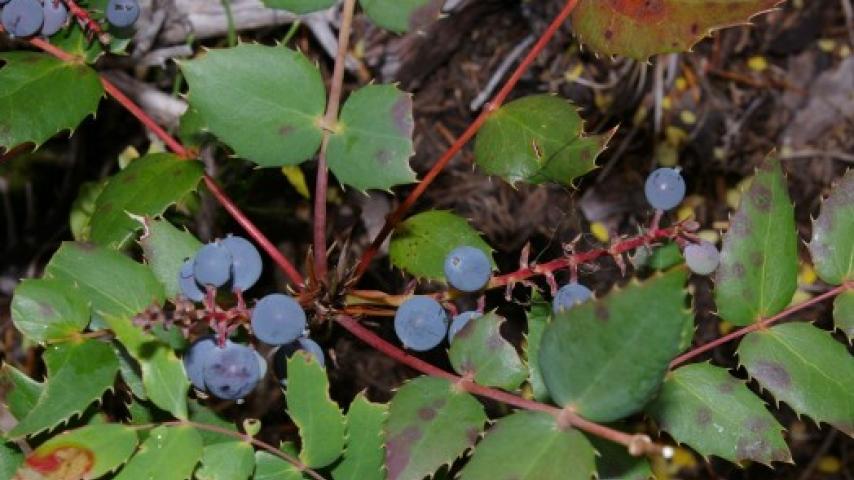Dull Oregon Grape (Mahonia nervosa)
Dull Oregon Grape, also called Cascade Barberry, is one of the most common understory plants in Pacific Northwest forests.

KINGDOM Plantae - PHYLUM Anthophyta - CLASS Eudicotyledonae - ORDER Ranunculales - FAMILY Berberidaceae
It was sufficiently common that Lewis and Clark collected it on their 1805 visit to the Lower Columbia River. They brought back many new species from their expedition, and this one was described to science in 1813 by Frederick T. Pursh, a German-American botanist. Although it grows in forests, it is a sun-lover like other Oregon-grapes and thus does better where the trees allow some sunshine to reach the forest floor. Douglas-fir forests are ideal.
The leaves sprout from low-growing stems, the clusters of leaves not reaching a meter in height. The leaves are evergreen, pinnately compound with 9-19 leaflets, and are only slightly shiny, unlike other species of Oregon-grape. They are palmately veined, with three long veins originating from the base, and with strongly toothed edges.
Clusters of small yellow flowers extend up from the center of a rosette of leaves in spring, replaced by purple berries after their pollination by bees and other insects. The berries are edible but quite tart and are better used for jelly. The holly-like leaves are often used in floral arrangements.
An alkaloid called berberine colors the inner bark yellow, and the shredded bark has long been used to make a yellow dye. Both the bark and the berries are used medicinally by Native Americans, and modern medicine uses it as a fairly potent medicine against parasites, bacteria, and viruses. It has also been used to treat diabetes and to reduce cholesterol levels. Most of the chemicals in plants that we use medicinally evolved to keep them from being eaten!